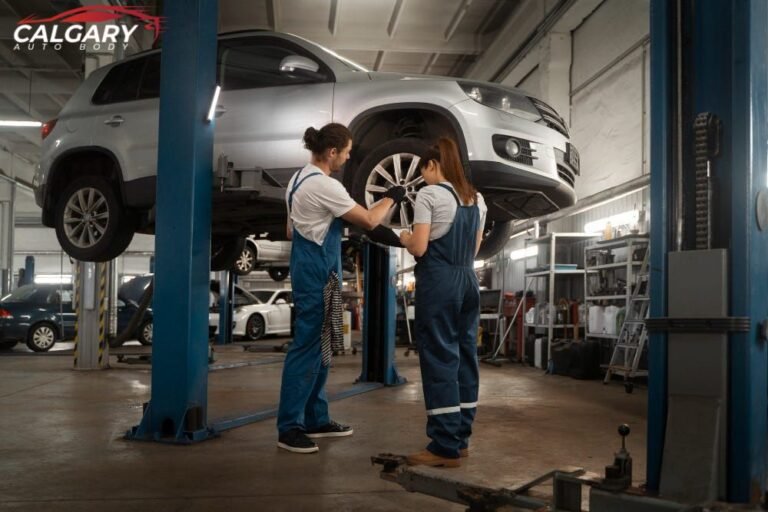From Scrap to Classic: Transforming Abandoned Vehicles into Vintage Beauties
Imagine this: a rusted, abandoned car sits forgotten in a dusty garage or overgrown yard. Most people would walk by without a second thought, seeing only a heap of scrap metal. But to a dedicated car enthusiast, this same vehicle holds a world of potential, a hidden beauty waiting to be uncovered. What if I told you that with the right knowledge, tools, and passion, that abandoned car could become a breathtaking vintage classic?
Restoring old vehicles is an art form, a labor of love that takes time, patience, and a keen eye for detail. In this article, we’ll take you on a journey from rust and ruin to polished perfection, showing how enthusiasts around the world are transforming abandoned vehicles into timeless vintage beauties.
1. Why Restore Abandoned Vehicles?
Restoring an abandoned vehicle isn’t just about bringing an old car back to life—it’s about reviving history. Vintage cars carry stories, and by restoring them, you’re preserving a piece of the past. These car recycling brisbane aren’t just modes of transportation; they’re windows into bygone eras. Whether it’s the unique design, the history behind the model, or the personal attachment someone may have to it, restoring a car gives it new meaning and purpose.
Moreover, there’s a certain satisfaction that comes from taking something seemingly beyond repair and turning it into a functional work of art. Do you see potential where others see junk? That’s what this hobby is all about.
2. The Charm of Vintage Cars
What makes vintage cars so appealing? It could be their elegant curves, the nostalgic designs, or perhaps the way they remind us of simpler times. Each classic car represents an era when craftsmanship and style went hand in hand. Unlike today’s cars, which often focus on practicality and efficiency, vintage cars are expressions of personality.
Owning a classic car isn’t just about driving; it’s about making a statement. When you drive a fully restored vintage vehicle, you’re not just turning heads—you’re celebrating history.
3. Assessing the Potential: Is the Car Worth Saving?
Before diving headfirst into restoration, it’s crucial to evaluate the vehicle’s condition. Not all abandoned cars are worth saving. The key here is to assess whether the frame and structure of the car are salvageable. If rust has consumed the metal or the frame is too damaged, the restoration may be too costly or impractical.
A thorough inspection of the chassis, engine, and body panels will help you determine if the vehicle can be restored. Sometimes, what looks like a rust bucket may have a solid foundation beneath.
4. Finding the Right Vehicle to Restore
Not all classic cars are created equal. Some are rarer, while others have more readily available parts. The first step in restoring a car is finding the right one. Many enthusiasts scour junkyards, barns, or online auctions to find their ideal project. Some may even come across vehicles passed down through family generations or forgotten in storage.
When selecting a car, it’s important to consider availability of parts, cost of restoration, and the car’s potential resale value if that’s part of your goal.
5. Restoration vs. Preservation: What’s the Difference?
When working on an old car, there’s a fine line between restoration and preservation. Restoration involves bringing the car back to its original condition—sometimes even better than when it was first built. This often includes new paint, parts, and re-engineering the car to modern standards.
Preservation, on the other hand, focuses on maintaining as much of the original vehicle as possible, including the imperfections. Some enthusiasts prefer preserving the car’s story, leaving certain elements untouched to retain its authenticity and history.
6. Step-by-Step Guide to Vehicle Restoration
Restoring a car is a step-by-step process that requires time and precision. Here’s a brief overview:
- Disassembly: Start by carefully taking apart the car, documenting each step to ensure nothing is lost.
- Rust Removal: Address the body, remove rust, and repair any structural damage.
- Engine Overhaul: Rebuild or repair the engine to make sure it runs smoothly.
- Bodywork and Paint: Restore the body, and give the car a fresh coat of paint.
- Interior Work: Reupholster the seats, replace the dashboard, and repair any interior damage.
- Reassembly: Put everything back together with care, testing for any issues.
Each of these stages can take weeks or even months, but the reward at the end is priceless.
7. Tools and Skills You Need
Restoring a vehicle requires a variety of tools, from wrenches to grinders and everything in between. You’ll need specialized equipment for welding, painting, and working on the engine. But beyond the tools, you also need patience and mechanical skills. If you don’t have experience in certain areas, don’t hesitate to seek help from professionals or fellow enthusiasts. Scrap Car Removal Brisbane
8. Sourcing Replacement Parts
Finding authentic parts for vintage cars can be a challenge, especially for rare models. Fortunately, many restoration shops specialize in sourcing or reproducing parts that are no longer manufactured. Sometimes, you may need to turn to online auctions, salvage yards, or even 3D printing to find the parts you need.
9. The Importance of Authenticity
For many car restorers, maintaining the authenticity of the vehicle is a top priority. This means sourcing original parts, using period-correct materials, and keeping the design as close to factory specifications as possible. Authenticity adds value to the car and preserves its historical significance.
10. Bodywork: From Rust to Shine
Rust is the biggest enemy of any old car, but with the right approach, you can transform a rusted shell into a gleaming masterpiece. The first step is cutting away any severely rusted metal and welding in new sections. From there, body filler is used to smooth the surface before it’s sanded and prepped for painting. The final result is a flawless exterior that looks brand new.
11. Engine and Mechanics: Breathing New Life Into Old Cars
Restoring a vintage car’s engine is often the most challenging part of the process. Whether you’re rebuilding the engine or replacing it, the goal is to make sure the car runs as good as (or better than) it did when it first left the factory. This may involve replacing worn-out parts, upgrading certain components, or even installing a more powerful engine while maintaining the car’s classic look.
12. The Final Touches: Interior and Paintwork
Once the exterior and mechanical components are sorted, it’s time to focus on the interior. Reupholstering seats, replacing old carpets, and restoring the dashboard to its original glory all contribute to the finished look of the car. The final touch is a fresh coat of paint, which brings the whole restoration together, giving the car that showroom-worthy finish.
13. The Joy of the First Drive
There’s nothing quite like the feeling of taking a fully restored classic car out for its first drive. The hum of the engine, the feel of the wheel, and the admiring glances from others make all the hard work worth it. After months or even years of effort, that first drive is a reward in itself—a moment to be savored.
14. Challenges and Pitfalls in Car Restoration
Restoring a car isn’t without its challenges. From unexpected costs to hard-to-find parts, there are plenty of potential pitfalls. It’s important to budget not just money but time, as some restorations can take years to complete. Additionally, you may encounter issues that weren’t visible at first, such as hidden rust or mechanical problems that require expert help.
15. Conclusion: From Scrap to Classic – A Labor of Love
Transforming an abandoned vehicle into a vintage beauty is not just about the end result—it’s about the journey. The hours spent researching, restoring, and perfecting every detail are a testament to the dedication and passion of car enthusiasts. For those willing to take on the challenge, the reward is a timeless masterpiece that combines history, craftsmanship, and personal achievement.






